At Expo 2025 Osaka, the Philippine Pavilion, titled “Woven”, presents a compelling fusion of sustainable architecture and immersive storytelling. Designed by Carlo Calma Consultancy in collaboration with the Japanese firm Cat Inc., the pavilion embodies the theme “Nature, Culture & Community: Woven Together for a Better Future.”
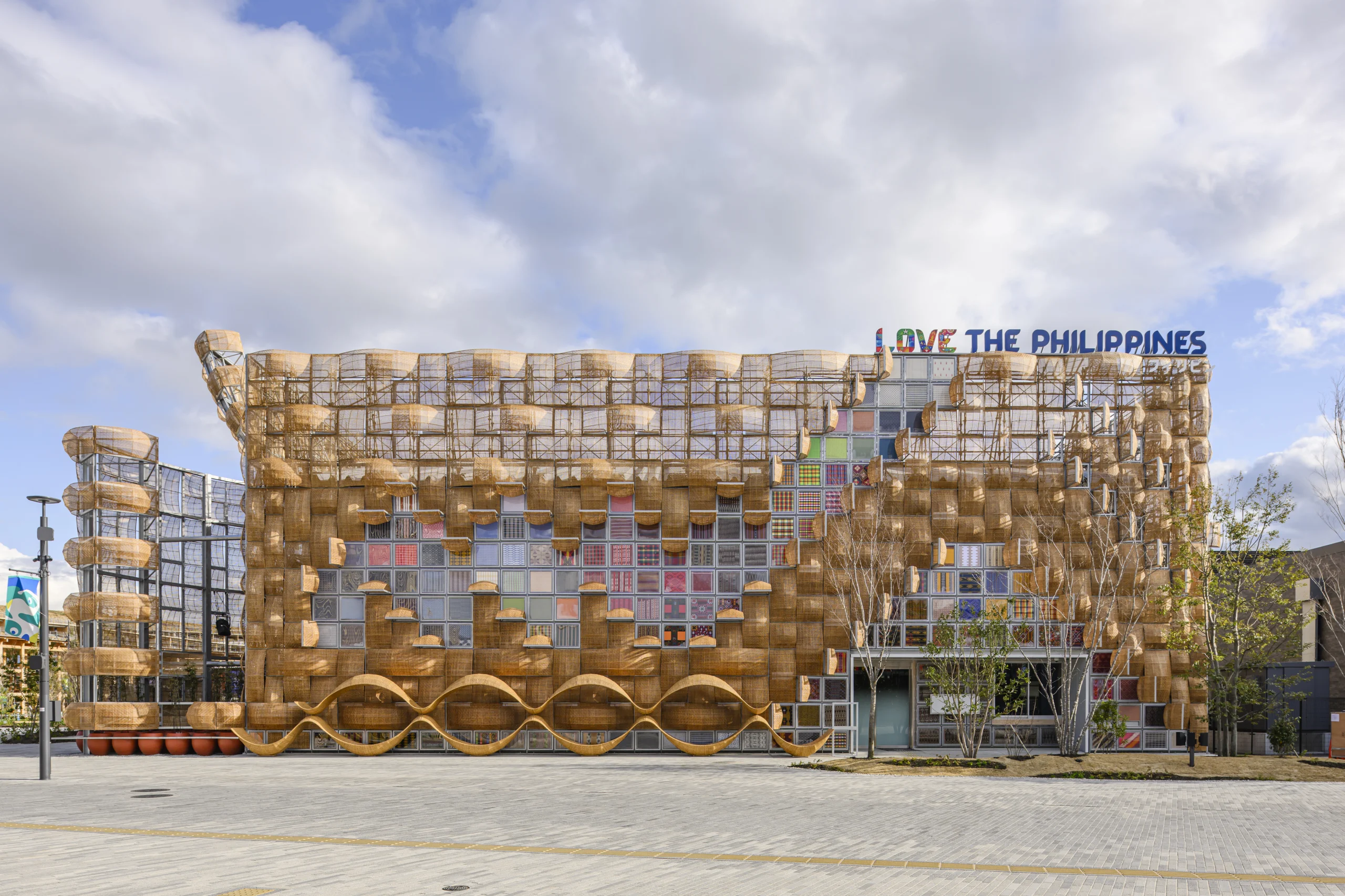
The pavilion‘s architecture mirrors the sturdy structure of warp and weft, the two fundamental elements of weaving, symbolizing the enduring strength of community, unity, and creativity. Constructed with over a thousand pieces of woven rattan, the pavilion exemplifies the scalability of weaving, transcending traditional furniture scales to showcase its potential at a building scale. This architectural piece serves as a testament to the future of handicraft, emphasizing its significance in an evolving digital landscape and celebrating the labor of love inherent in Filipino craftsmanship.
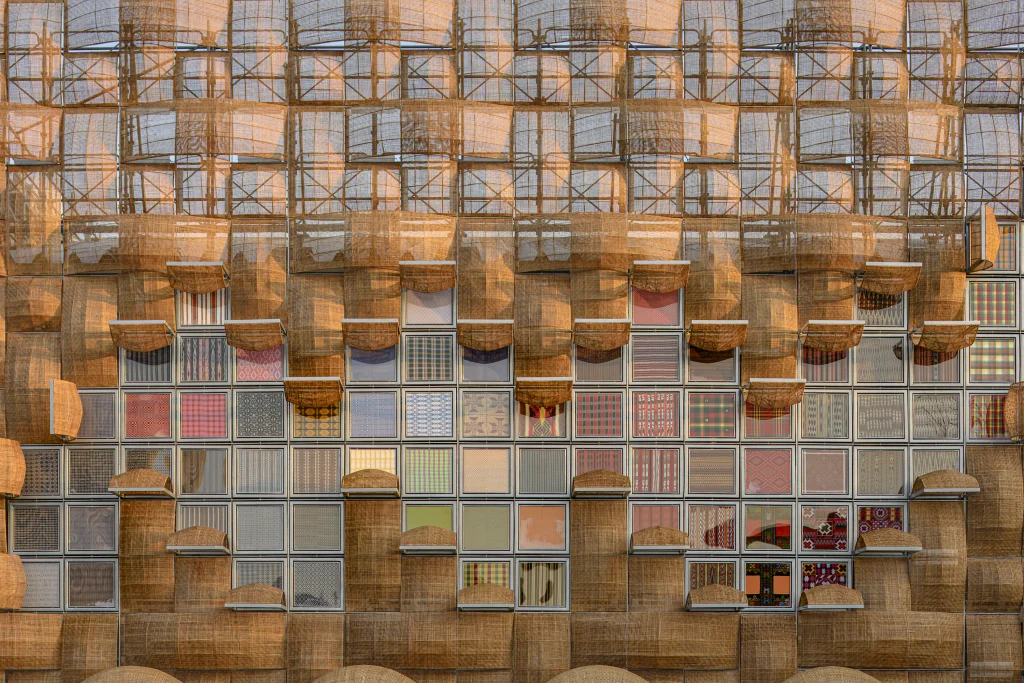
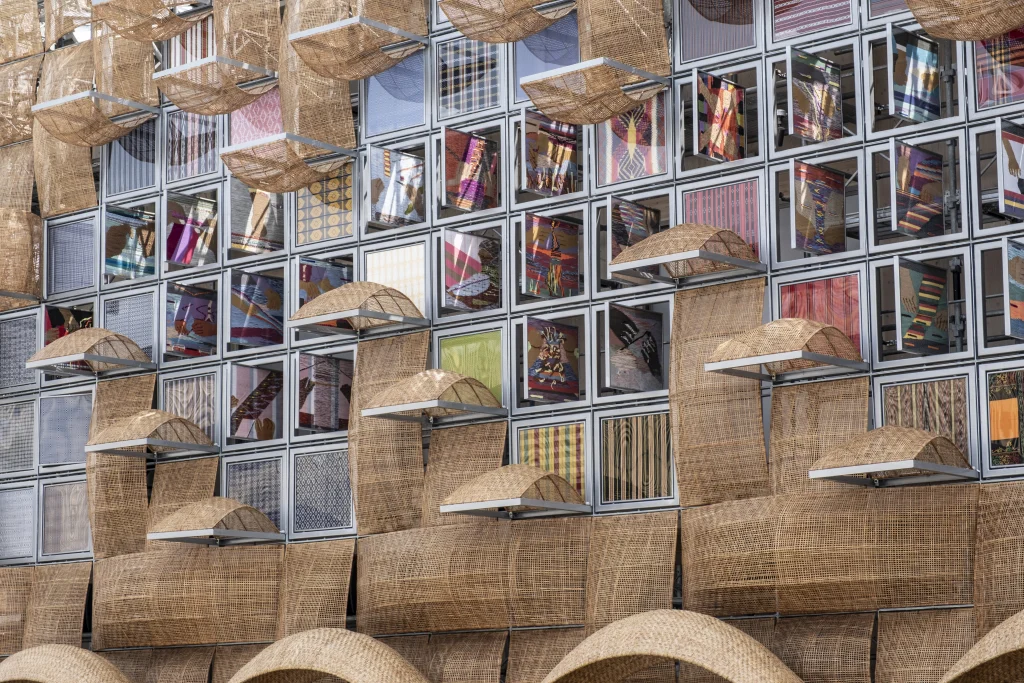
As a tribute to indigenous culture, the pavilion’s facade is adorned with 212 handwoven textiles, each representing the Philippines’ 18 regions. Encapsulated within weather-sealed assemblies, these textiles sway with the wind, symbolizing the nation’s resilience. This installation marks the largest collaboration of Filipino community weavers in a single project, honoring and celebrating their work through the Expo.
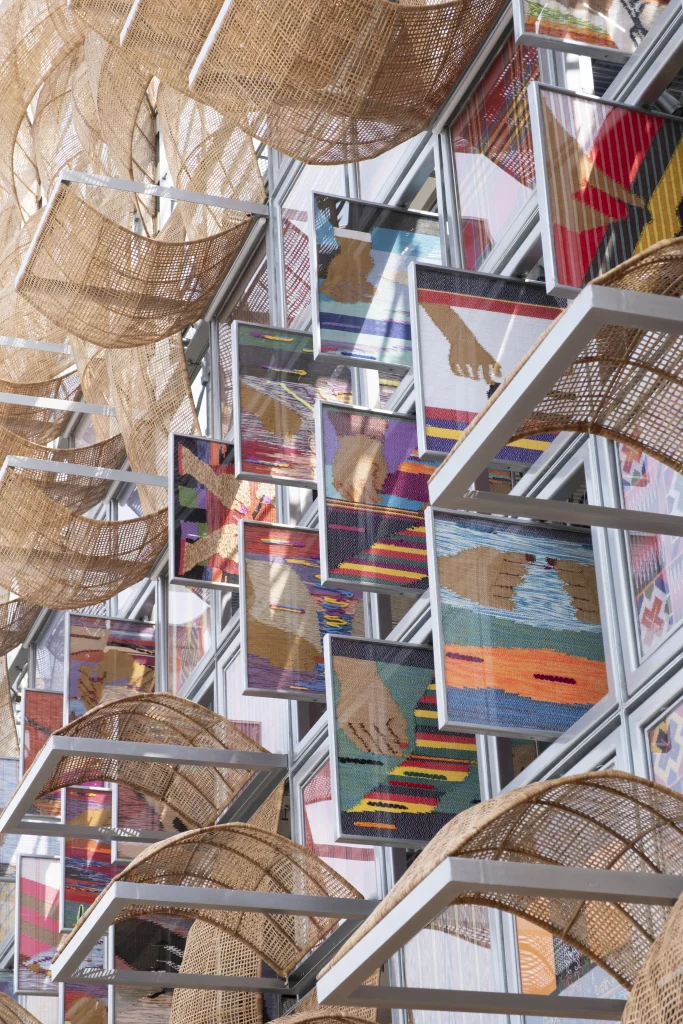
A standout feature of the pavilion is its interactive live performance façade, the first of its kind for the Philippines at a World Expo. At selected times, live performers from the Cultural Center of the Philippines showcase traditional dance and craft performances, bringing the vibrancy of the site to life and ensuring guests can experience the content before or after entering the space itself. This innovation creates a dynamic structure that communicates the nation’s vision to visitors.
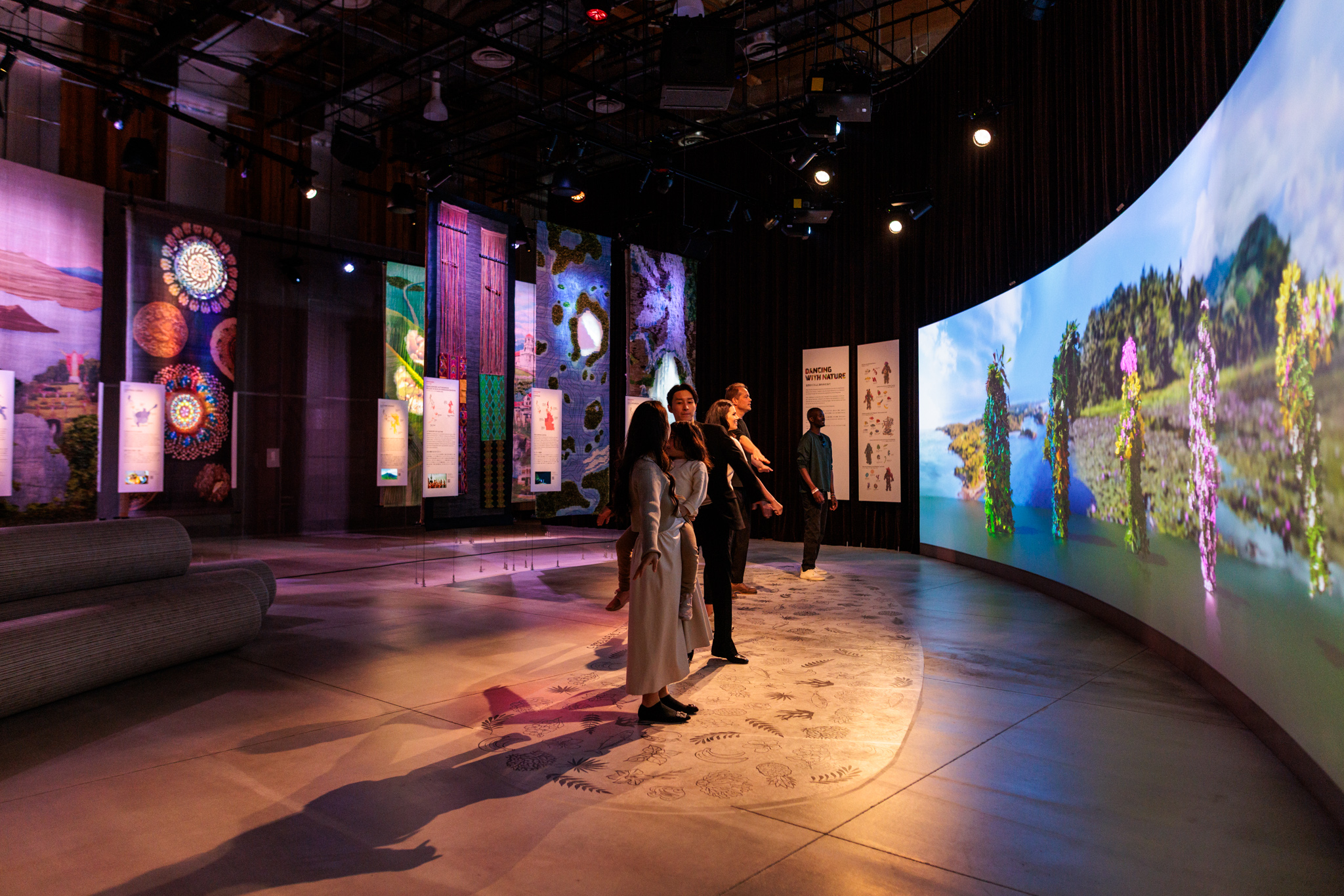
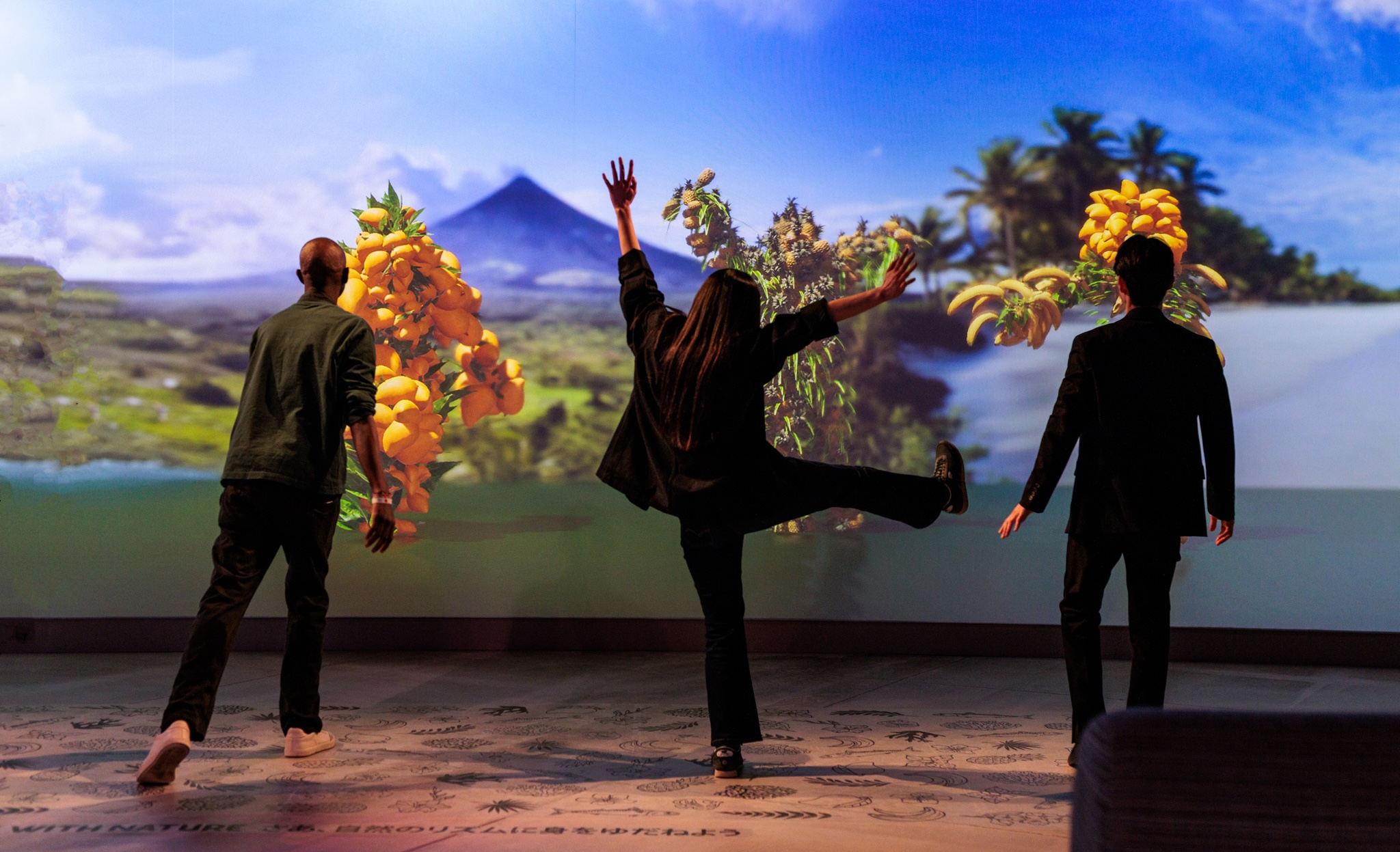
Inside, visitors embark on a multisensory journey through a forest of woven artworks and an interactive AI-powered fiesta, celebrating the Filipino spirit of celebration and unity. The “Dancing with Nature” installation uses generative algorithms to create visual representations of visitors as elements of nature, such as leaves or fish, symbolizing the interconnectedness of all living things.
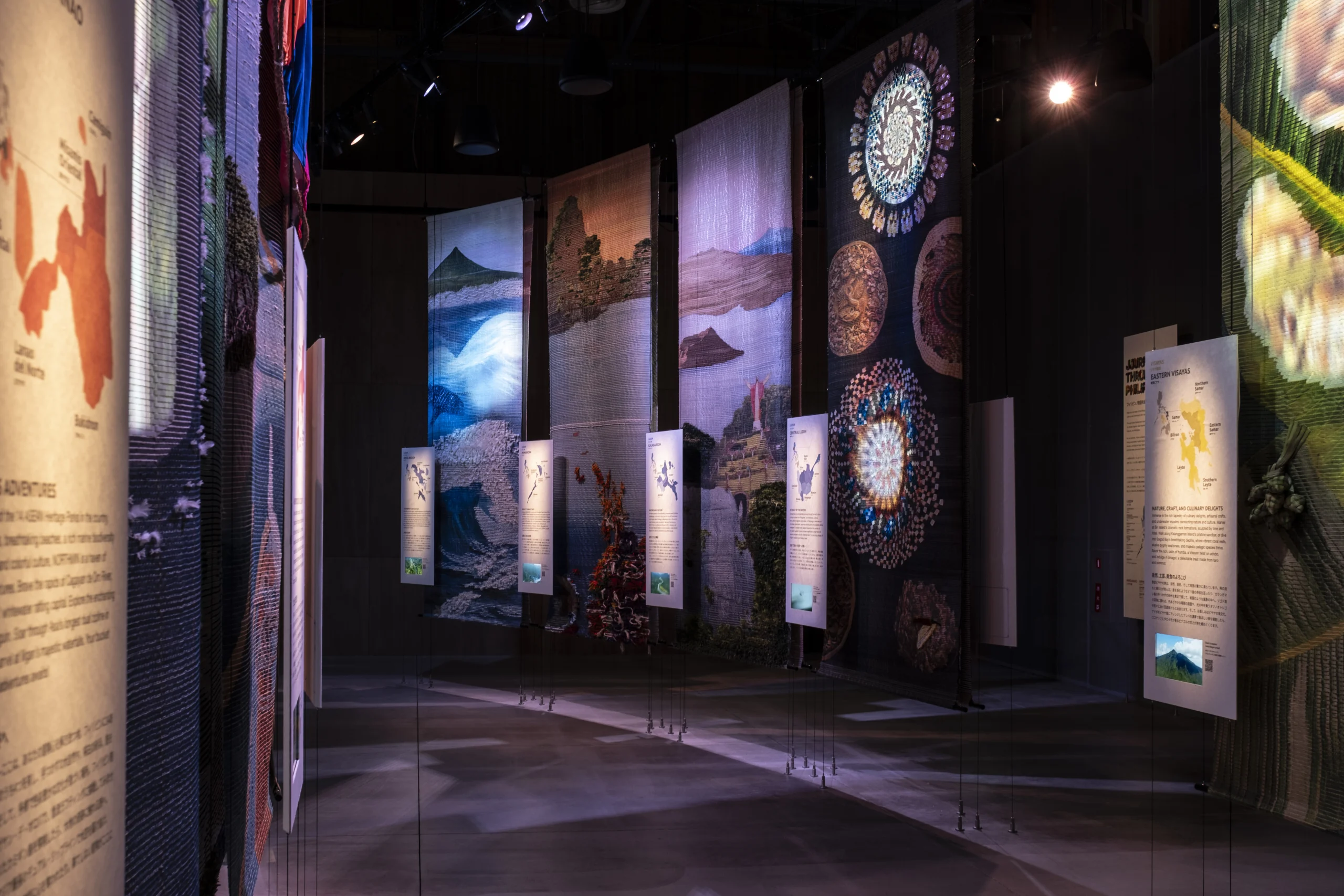
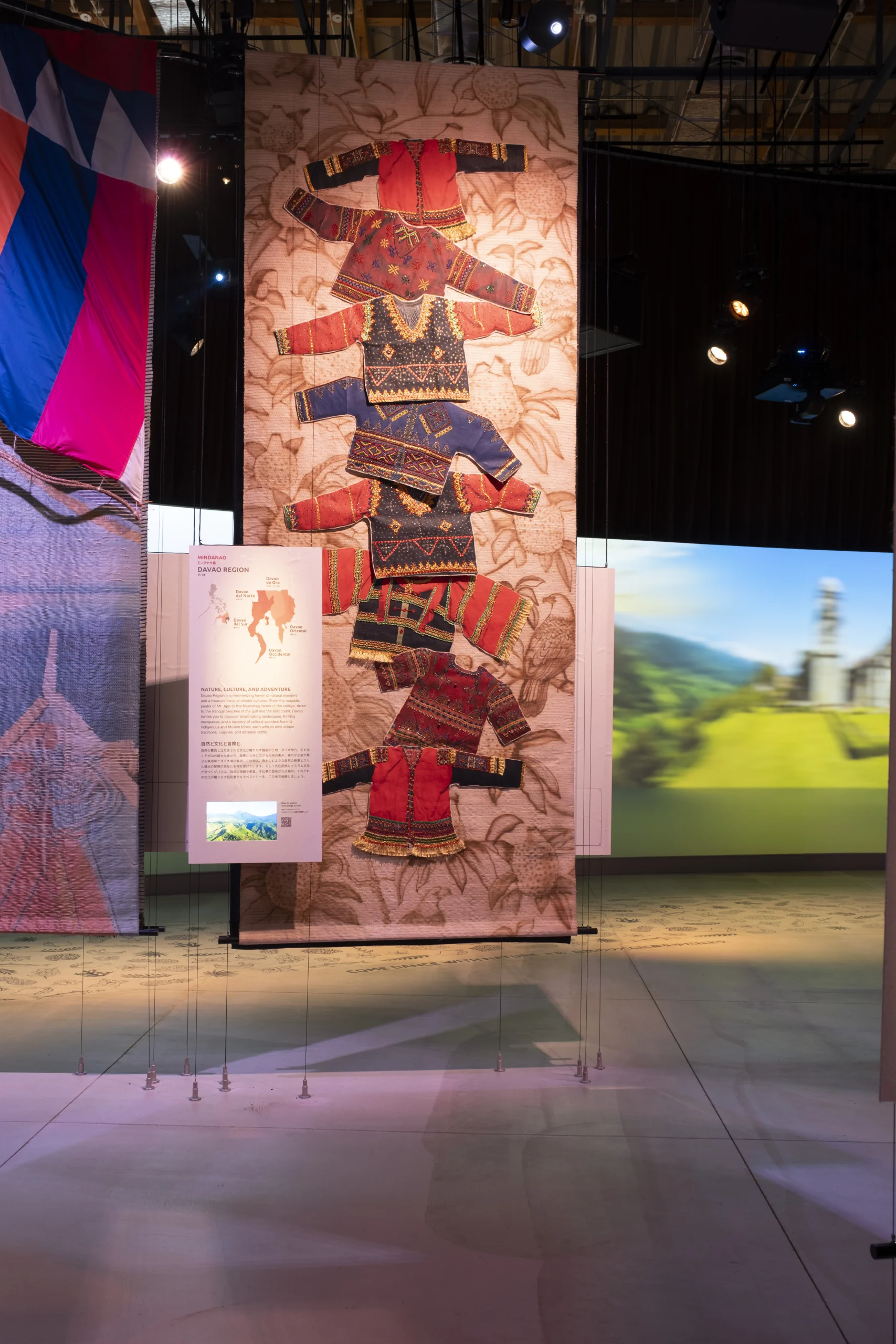
Sustainability is at the core of the pavilion’s design, utilizing indigenous renewable materials like rattan and abaca, and adhering to circular design principles to ensure the structure’s components can be repurposed post-Expo. The pavilion’s key elements, including its woven façade, are intended to have a second life in the Philippines, extending their cultural and educational value.
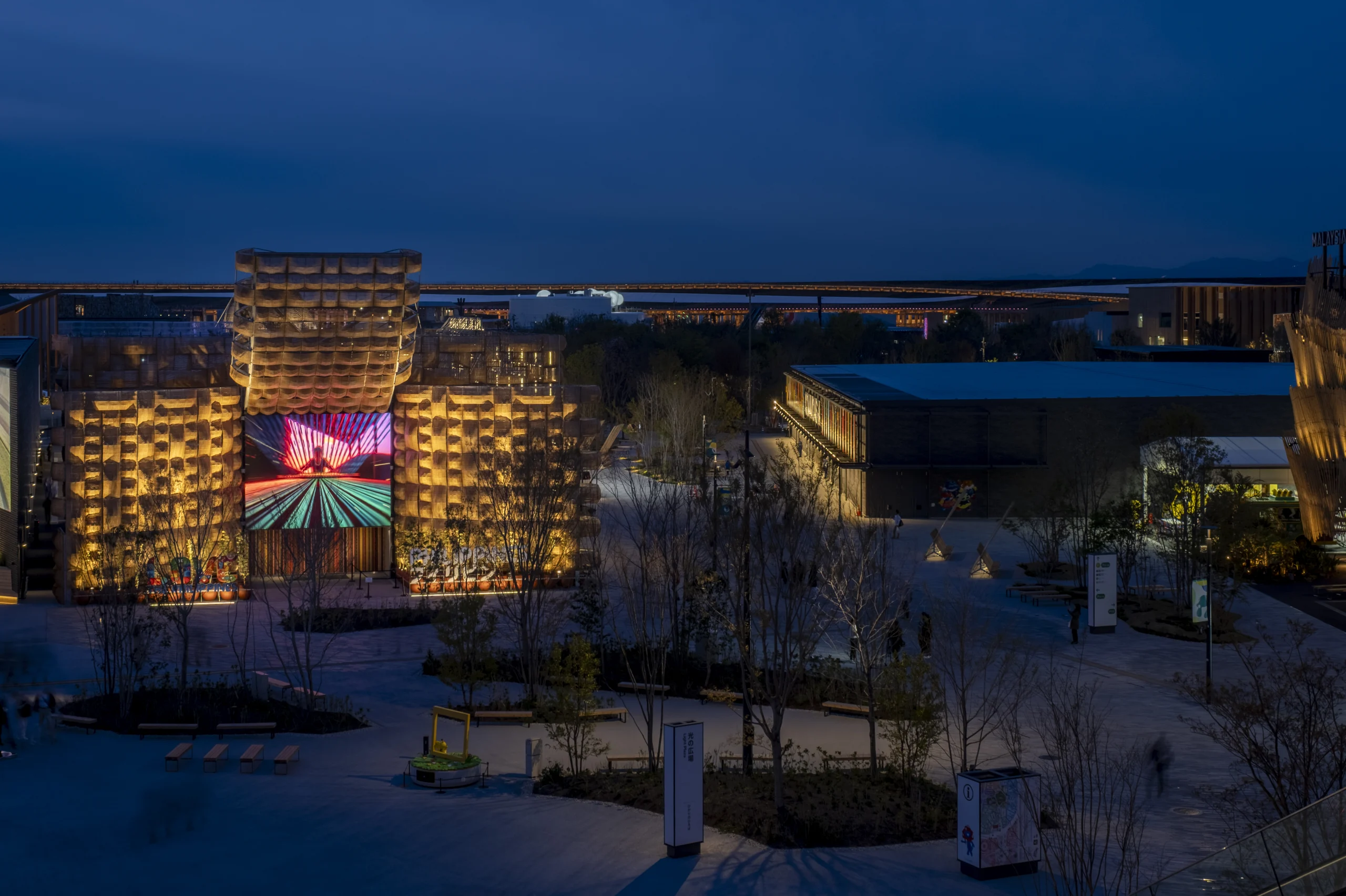
For a closer look at Expo 2025 Osaka and detailed insights into the diverse array of participating pavilions, explore our comprehensive coverage of Expo 2025 Pavilions.
Philippine Pavilion Project Details:
Architecture: Carlo Calma Consultancy Inc.
Lead Architectural Firm: Carlo Calma Consultancy Inc.
Guest Experience Design: Tellart
Creative Production: 1053.co | Chochay Garcia
Executive Architect & Project Management: Cat Inc., RF Construction Development Corporation



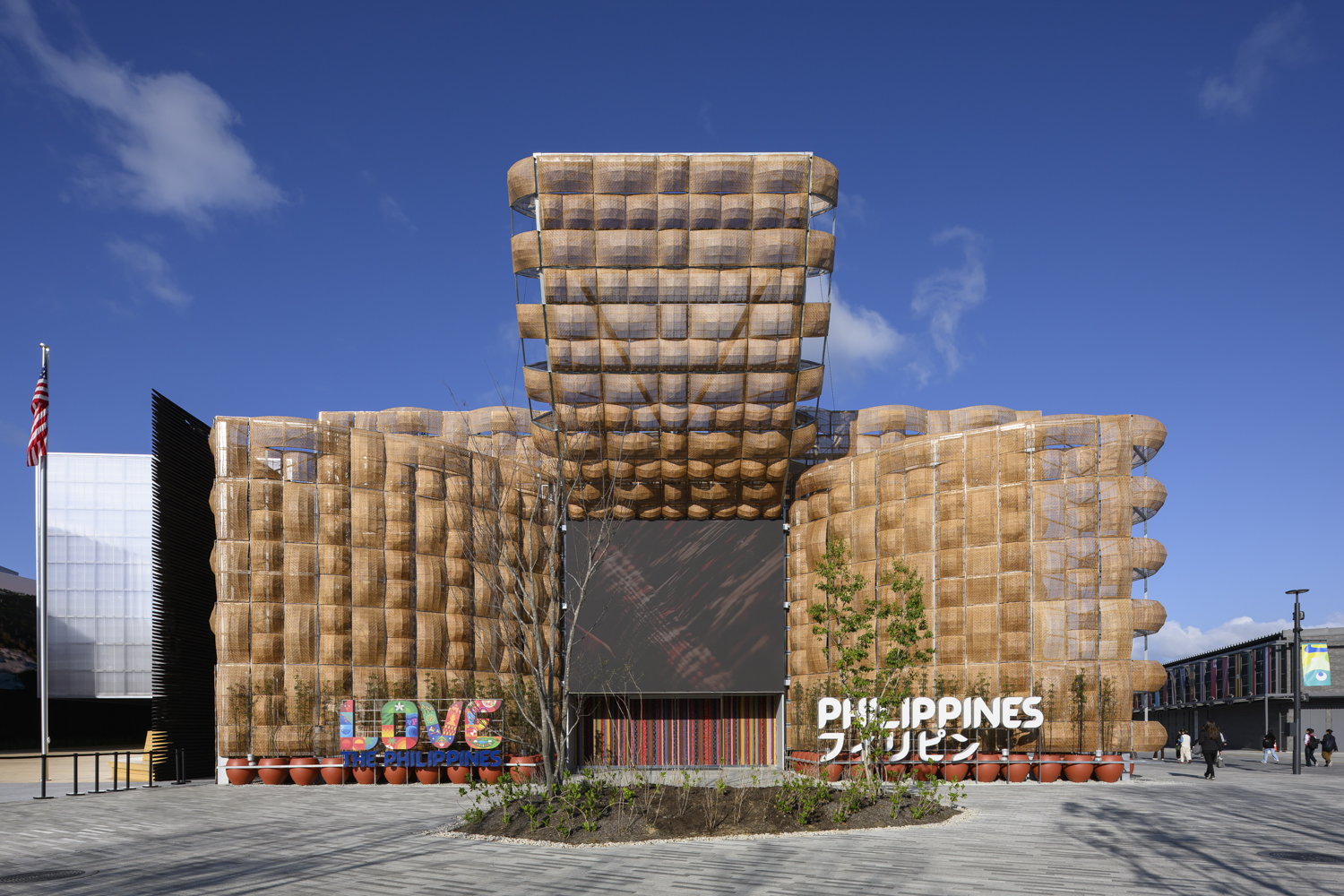



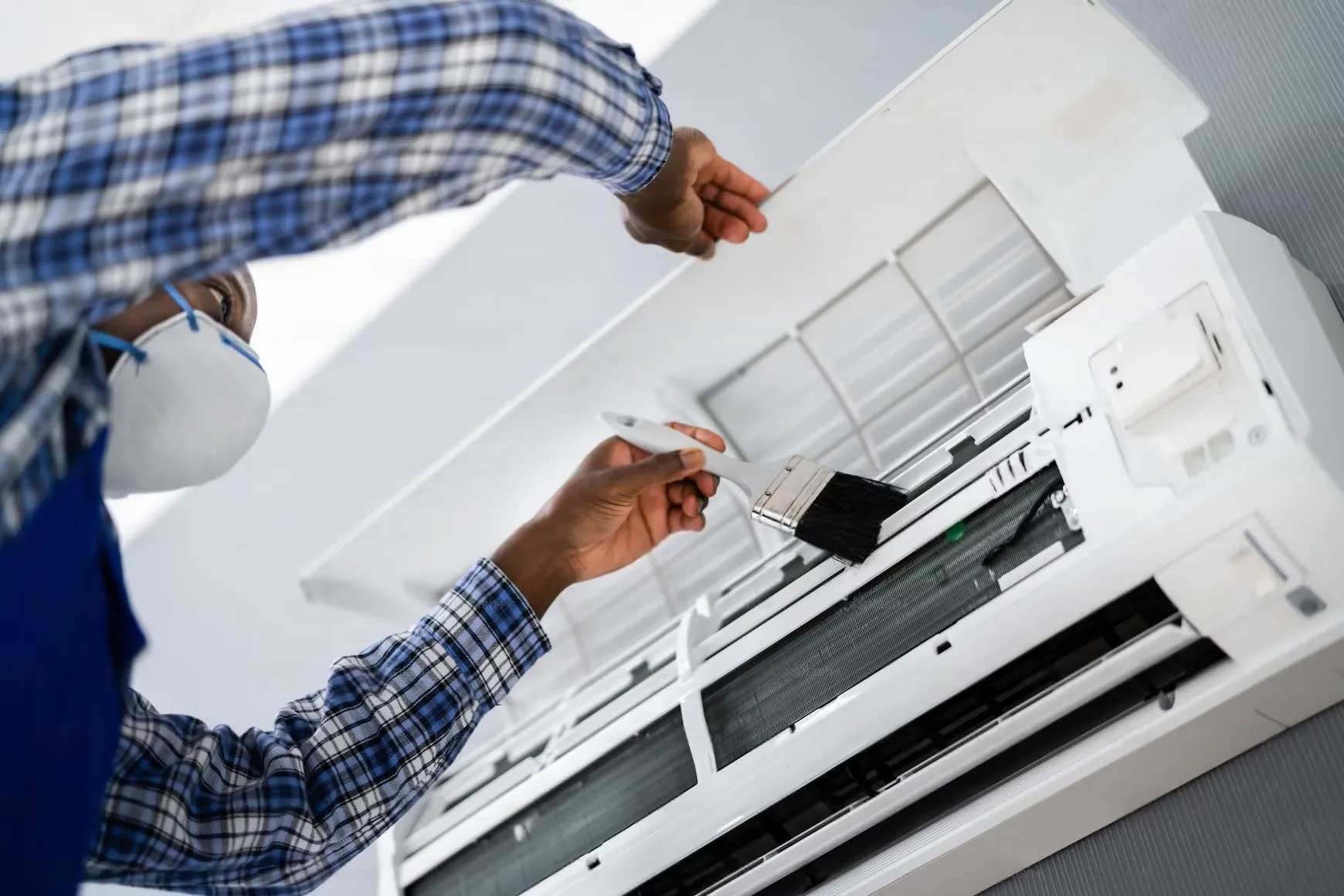










Leave a comment